
Nidavellir
Weidun and Bonfur sat on the small bench down by the river and stared at the rippling water. "We must go on soon," said Weidun, "the way is still long." "Give me ten more minutes," Bonfur replied, wearily leaning on his iron blacksmith's hammer. The night was just too short in the tavern "Laughing Goblin".
The king himself has chosen Weidun and some other dwarves to form a new army. Scouts had found out that the dragon Fafnir had plans to destroy the kingdom of Nidavellir. So Weidun set out and went from tavern to tavern to win the strongest dwarves of the land for his plan. The royal council had provided Weidun with plenty of gold for this purpose, but he had another skill that was almost more important than the gold: his negotiating skills. Do you have what it takes to support Weidun? Then accompany us to the kingdom of Nidavellir.
Off to the dwarf kingdom
Nidavellir is a set collection game for two to five players. Each player takes the role of an Elvaland and tries to recruit the strongest force for the king. The game is played over two ages with each age consisting of four rounds (five rounds for 4+ players). After the first age there is an intermediate scoring.
As with most set collection games, the first thing you ask yourself is of course: what do I need to collect? In Nidavellier the dwarves are divided into classes. The design of the cards makes it easy to see which class a dwarf belongs to. The cards are black and white throughout, but have rank insignia in the corresponding colors and are of course scored differently at the end of the game:
-Blacksmith (purple): Points according to the number of rank insignia on the individual board
-Hunter (green): Points according to the number of rank insignia on the individual board
-Explorer (blue): Points according to the bravery values in the rank badges
-Miner (orange): The number of rank badges is multiplied by the bravery values
-Warrior (red): Bravery values according to the bravery points in the rank badges
Whenever a new complete set is in the player's display (set = one dwarf of each color), the player must recruit a hero from one of the four card holders. Heroes do not always belong to a class, but usually bring decent points in the final scoring, e.g. if you end up with the most Dwerg Brothers.
Through the taverns in the village
At the beginning of each round, the age cards are placed face up in each tavern. Then the players start placing their coins face down on the troop tableau. One each for the corresponding tavern and the last two go into the money pouch below the troop tableau. After all the coins are placed, they are revealed tavern by tavern at the same time. The player with the higher coin may first take a card from the corresponding tavern and place it in his or her discard. If more than one player has the same coin, the diamond above the troop tableau decides who may take a card first. The diamond is then exchanged.
If a player has placed the zero coin on a tavern, he may take a new coin from the treasury. The value is determined by the two coins in the purse - these are added together. If the coin with the corresponding value is out of stock, the next higher coin may be taken. The coin from the treasury is then exchanged with the highest coin in the purse. Coins can also be upgraded with certain subsidy, hero or value cards.
The last round of the first age heralds the intermediate scoring. Here, for the first time, players get a reward for their diligence. At this point, a simple scoring takes place, where the goal is to have the most dwarves of a certain class. At the end of the second age, the dwarves are scored according to their class. Additional points are then also awarded for heroes, the accumulated coins and the golden jewel.
All night drinking - what remains?
Actually Nidavellir is a classic set collection game. We collect cards and expand our dwarf army. The special game appeal comes with the innovative drafting and bidding mechanism that encourages players to bluff. The game unfolds its full potential in a round with three to four players - that's when it's simply the most fun. With five players it gets a bit confusing. Regardless of the number of players, you definitely need a lot of space on the table.
The entire game material is very attractively illustrated. The design of the cards makes it easy to see the classes and values. The card holders for the heroes and the stand for the treasury are practical and also ensure a clear display.
Finally, the question remains how often the game will find favor with us in the future in the round, since the course of the games is quite the same. However, it is very suitable for a quick round in between or for a game with board game newcomers due to the easy-to-learn rules and the structured gameplay.
And what actually became of Weidun now? I heard that one night he got drunk at the inn "Shinning Horse" and was never seen again. Supposedly he gambled away all the gold of the royal council at a card game and drank a lot of beer. Have you heard anything? If so, drop us a line ...
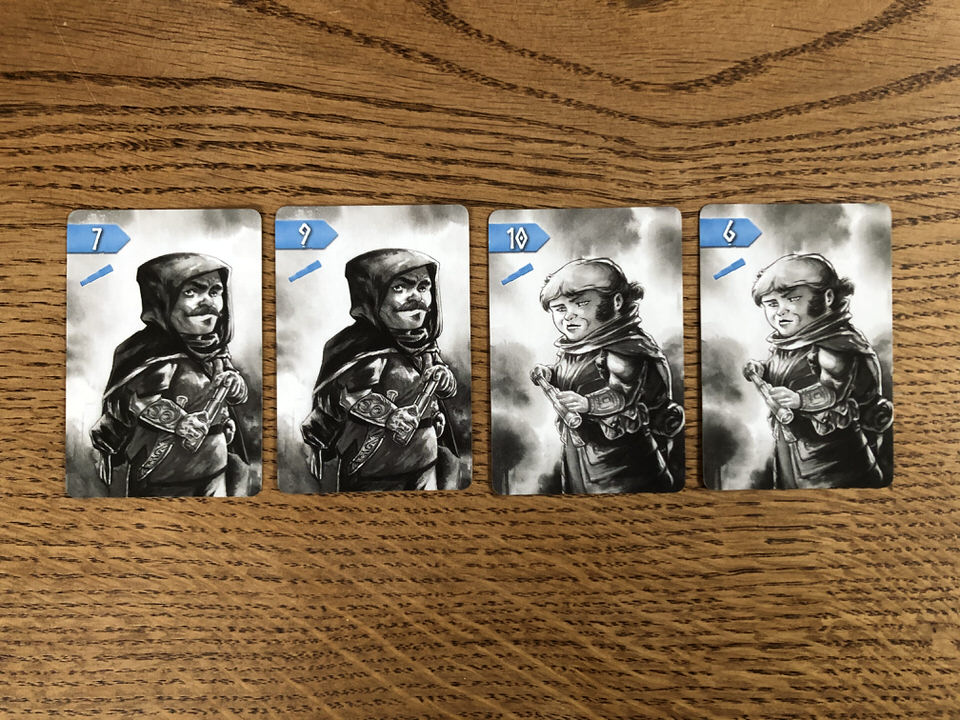
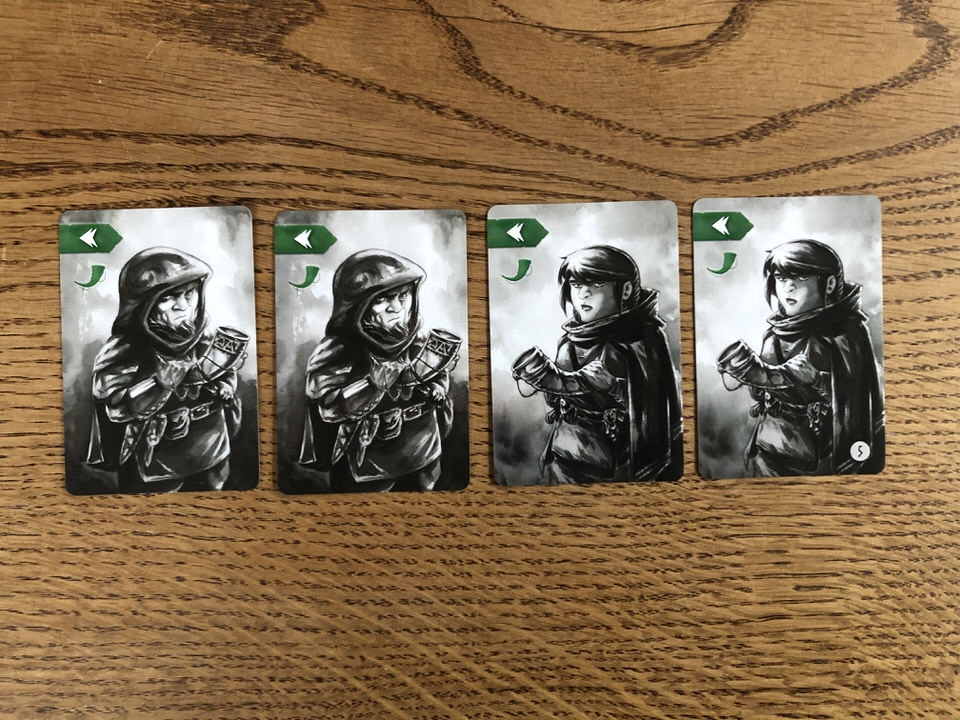
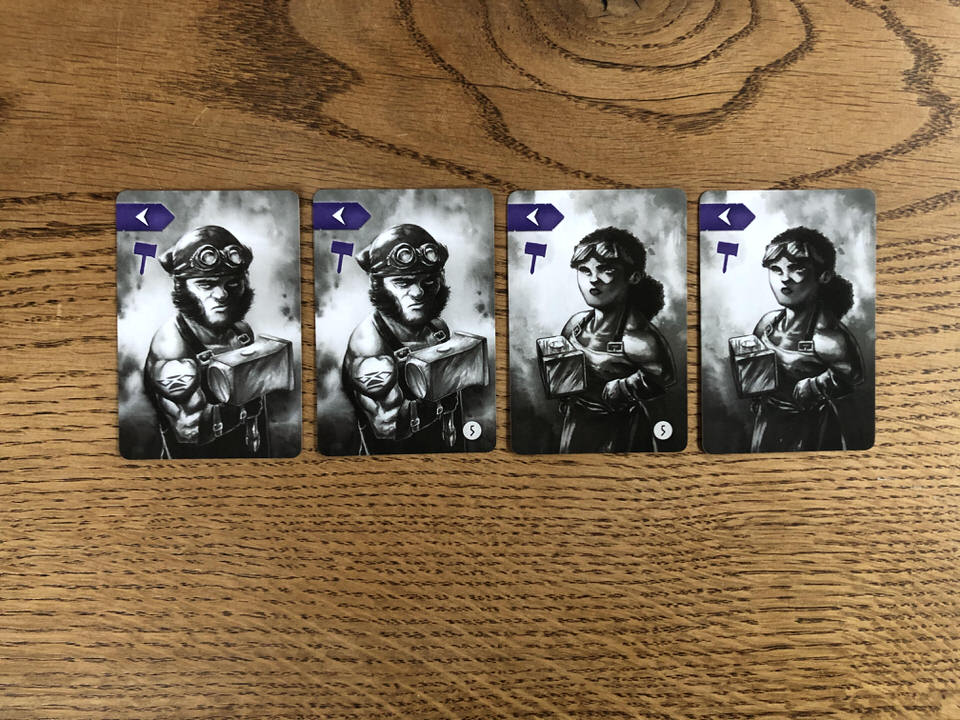
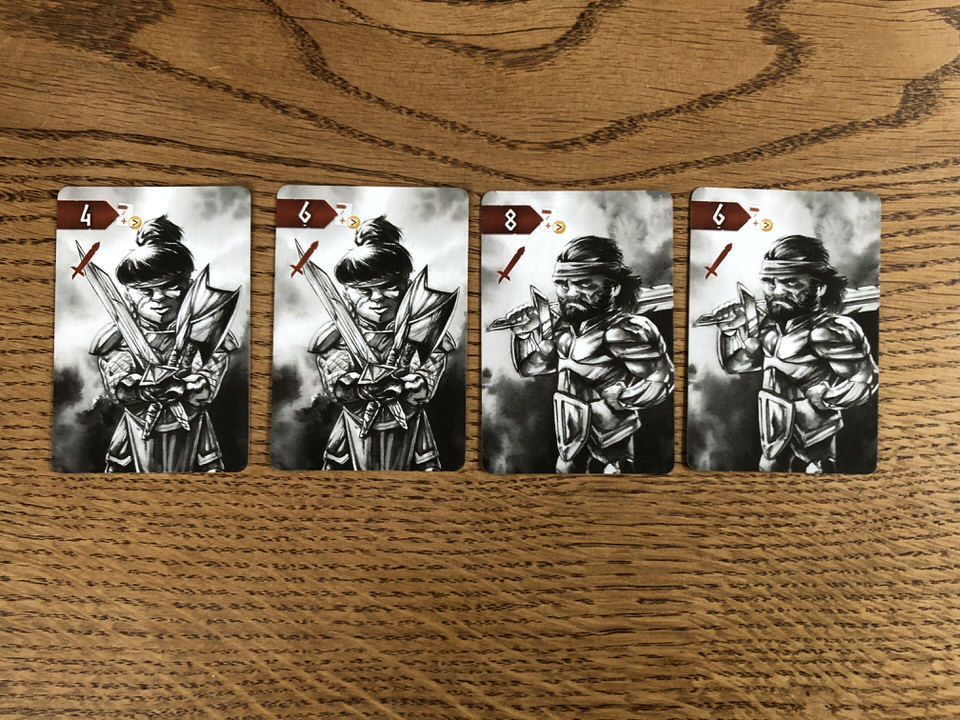


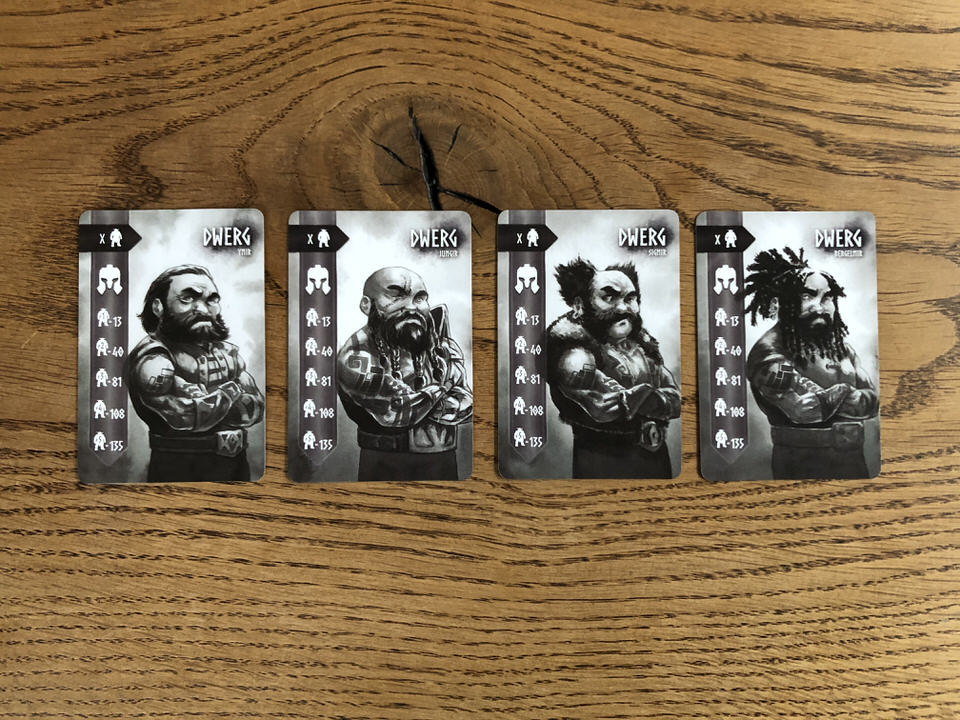

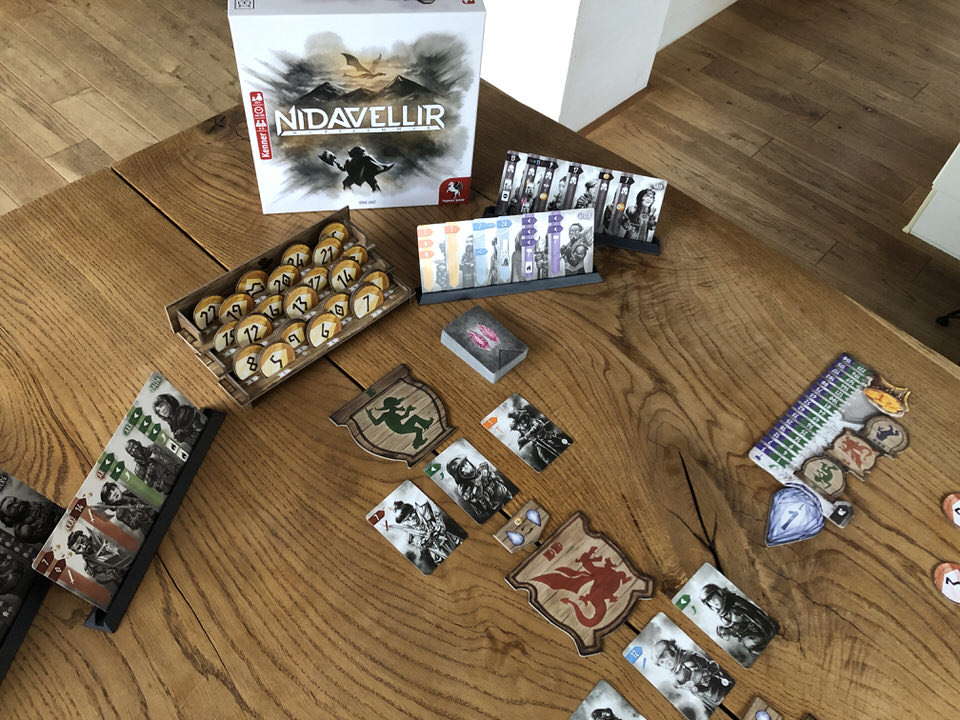
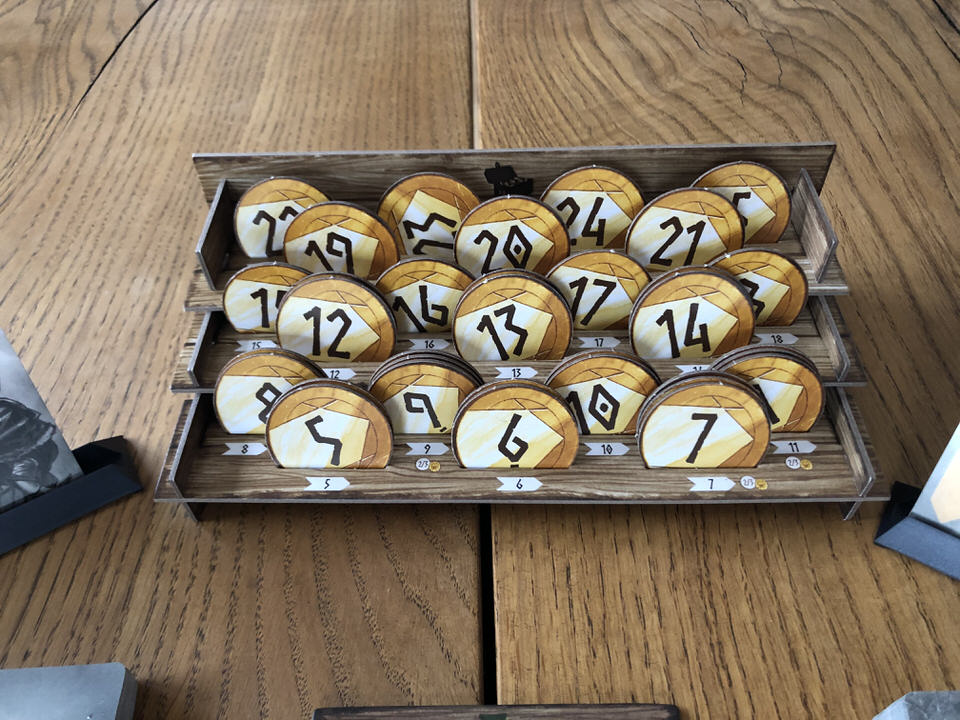
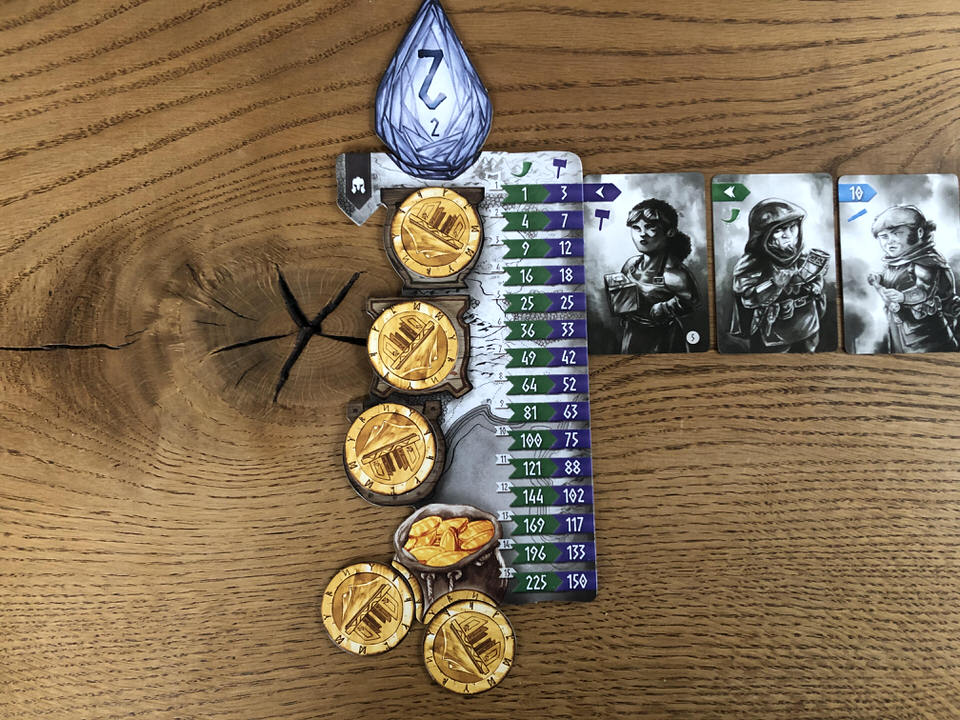
Leave a comment